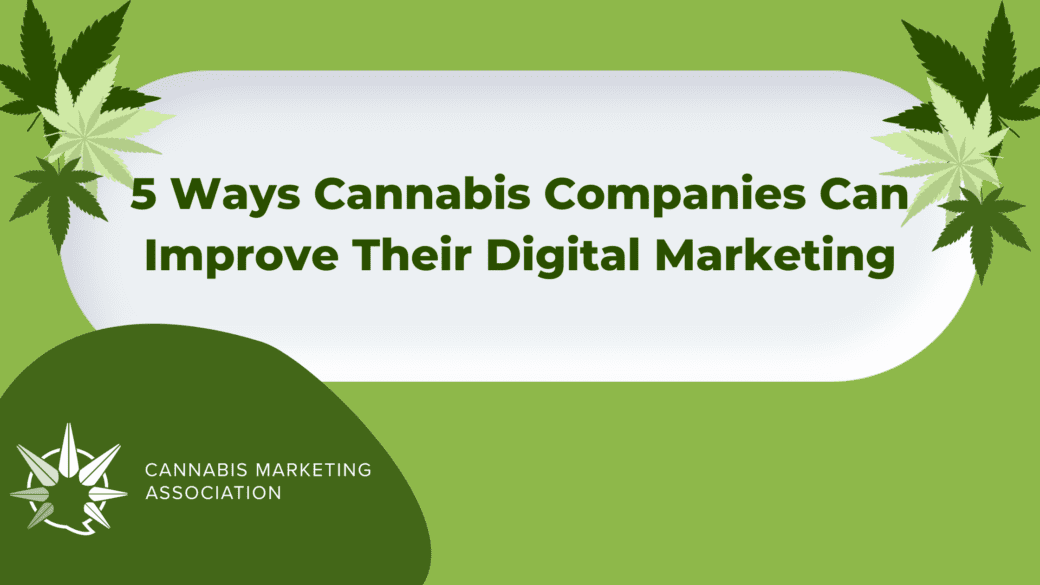By Klarn DePalma
To differentiate your cannabis company, strengthen customer relationships, and build a business that endures, you must learn to convey how your products provide value. That’s what successful brands do, and that’s what leaders in the cannabis industry are doing, too. But here’s the thing—it is easier said than done in the cannabis arena. The rules are different in this space, and they change regularly.
For example, as of now, broadcast and OTT/CTV are off-limits. Paid Social is a minefield. Out-Of-Home (OOH) is permitted in some places, but not others. It’s like the Abbot and Costello skit of “Who’s on First.” No wonder that, even for the savviest of advertisers, it can be overwhelming. While you know your product best, chances are there’s someone out there who knows how to navigate the digital advertising landscape better than you do. Finding proven partners that specialize in cannabis marketing will provide both peace of mind and ROI. Here are five best practices to keep in mind as you choose programmatic partners and strengthen internal strategies.
1. It starts with compliance
Cannabis companies are contending with three levels of oversight: federal, state, and national. They must develop processes, and relationships, for keeping up with ever-changing laws and guidelines. For example, companies advertising in Michigan need disclaimers on their banners that aren’t required in California. Regional nuances require advertising partners with deep domain knowledge, but these partners can be hard to find. With the green rush came an influx of new players eager to capitalize on the market opportunity. When considering a partner, ask the following questions to assess their industry expertise:
- How are you keeping up with the ever-evolving cannabis advertising industry and state regulations?
- Have you advertised other cannabis brands? How did you measure success?
- Every vendor in the cannabis category must weigh business needs against legal compliance to determine tolerance for risk. How would you describe your company’s risk tolerance?
- How does your technology stack support geo-targeting or audience composition requirements? (Note: effective digital marketing partners will use leading-edge targeting technology to reach customers, including geo-fencing, behavioral targeting, mobile app data, search history, contextual targeting and site retargeting.)
- What cannabis products and services do you have and what sets them apart from everyone else’s? How are you advocating for yourself?
In addition to working with experts, cannabis companies should build internal strategies for staying up to date with industry changes, such as attending conferences, subscribing to industry newsletters, and setting up Google alerts.
2. Understand your audience
Effective marketers know better than to make assumptions about their customers. They are using next-generation data-driven tools and strategies to understand their behaviors and preferences. This is what successful brands do, and it makes sense for cannabis companies to do the same. Ninety-one percent of Americans believe cannabis should be legal for recreational or medical use, according to a recent Pew Research Center poll, however, some people are still holding on to certain pre-conceived notions. The challenge is, how do you earn trust and establish a relationship with these prospective customers? First, you have to get to know them.
Historically, the cannabis industry has overlooked women and people ages 50 and older, but these segments account for a growing percentage of your audience, so how do you connect with them? My suggestion? Get yourself some research and use it to understand how this target consumes information. There’s data out there that will provide valuable insights on go-to platforms by age and tell you the information your targets seek. Take time to learn about consumer preferences, and you’re on your way to building experiences that lay the foundation for engagement and sales.
3. Invest in education
Cannabis can be confusing, especially for new users who aren’t quite sure of the difference between THC and CBD. What’s good for an ache versus what’s good for relaxation? Companies that commit to education and provide resources on products, as well as general insights on topics like micro-dosing and health and wellness benefits will help normalize the use of cannabis. For example, Curio Wellness (medicinal) and MedMen (recreational) do a fantastic job providing educational resources.
White papers and research reports, like Eaze’s State of Cannabis 2020 report, also help earn customer trust and establish companies as leaders in the space. Cannabis brands are also investing in native advertising on trusted websites, including Huffington Post, to educate the market and raise brand awareness. Several reputable print publications allow cannabis marketing, including Fortune, Esquire, Men’s Journal and Sports Illustrated. You can even retarget people who subscribe to the magazine with digital ads to reiterate your message. While the key performance indicators for these campaigns are generally content engagement, they can lead to conversions too, and strengthen relationships with existing clients.
4. Stay clear of “black box” marketing
Marketers should be wary of ad exchanges that lack transparency about where ad inventory is running. Brand safety matters. While many premier publishers still do not accept cannabis content, some do. Educate yourself or look for brand-agnostic digital partners who can help find these outlets.
Being an entrepreneur or a start-up doesn’t mean you have to do it all alone, the best ones tap into experts that excel in their fields. I get it, it can be daunting. You finally have a working understanding of what’s allowed and then Google changes the rules and boom, no more cookies. You’re in cannabis, and I’m guessing that cookies mean something different to you than they do to Google! Again, turn to experts whose business it is to abide by and keep abreast of data privacy regulations and have adopted strategies for marketing in a “cookie-less” future. Google’s decision to phase out third-party cookies will change how the ad industry approaches campaign targeting. Cannabis marketers can still reach cannabis enthusiasts, though, using a combination of contextual targeting and geofencing, which allows you to serve ads during a particular timeframe around a specific area. For example, you could geo-fence a special event, concert or even a trade show.
5. Measure everything
Be sure you can tie back targeted advertising campaigns to sales. Attribution can be challenging in the cannabis industry, so more and more transparency is the name of the game. Cannabis brands should expect data visualization tools to track and optimize vital insights on consumer activities, including:
- Site Conversions
- Cart Checkouts
- In-Store Sales
- App Installs
Cannabis companies face unique challenges and regulations, but they can still take pages from the digital marketer’s playbook. As more companies enter the cannabis space and competition increases, always-on communication across channels is what matters. This is what will distinguish your product, build relationships and drive sales.
About the Author

Klarn DePalma, Executive Vice President, joined MNI Target Media Inc. (MNI) in 2018. Under his leadership, MNI is realizing record-breaking earnings and is expanding its reach. It now has offices in over 47 cities nationwide and its sales force is over 80 people strong, serving over 1,200 clients.
MNI specializes in multimedia targeted advertising, and partners with top-tier national and local online and magazine media brands to deliver highly targeted, multiplatform advertising campaigns. To further MNI’s value proposition, DePalma has established MNI as the preferred digital partner to the Meredith Local Media Group (LMG) and its 17 owned or operated television stations and entered into an exclusive agreement with Nativo to deliver native content. And under his leadership, the innovation and business development teams have launched a self-serve ad system and continue to expand the breadth of MNI’s political and OTT offerings.
A leader in sales and management for over 25 years, DePalma was Vice President and Manager of WFSB-TV, Meredith’s CBS affiliate in Hartford before joining MNI. He started as an entry-level salesperson and worked his way up to Vice President and General Manager of WFSB-TV and Western Mass News, Meredith’s CBS, ABC, and Fox affiliates in Springfield, MA.
DePalma holds a Bachelor of Science Degree from the University of Connecticut. He serves on the Boards of Directors of the Television Bureau of Advertising, Connecticut Broadcasters Association (Past Chairperson), Connecticut Science Center, and Channel 3 Kids Camp. He is also a proud overseer for the Bushnell Performing Arts Center.
He travels extensively to personally further MNI’s mission to provide hands-on, white glove service to its partners.
To learn more about MNI’s targeted advertising solutions, please visit: https://www.mni.com/
About MNI Targeted Media
MNI Targeted Media (MNI) is a division of Meredith Corporation (NYSE: MDP; www.meredith.com), the leading media and marketing company that serves 175 million unduplicated American women and 80 percent of U.S. millennial women. MNI provides targeted digital and print advertising programs and offers clients a single point-of-contact for multiplatform, customized, demo- and geo-targeted advertising. From research and strategy to implementation and analysis, MNI delivers the digital and magazine products and services needed to efficiently and effectively reach audiences, across the country or across the street.
For more cannabis marketing content visit CMA’s Blog.


